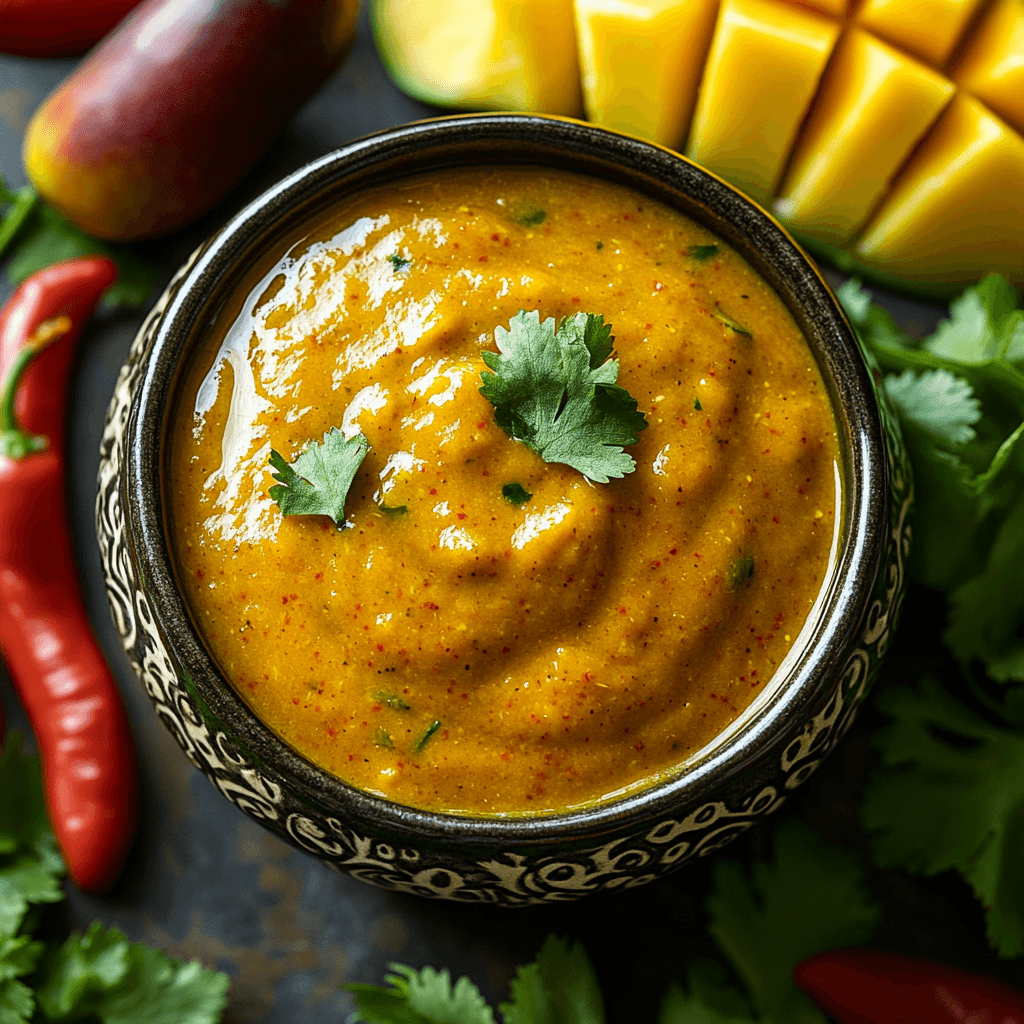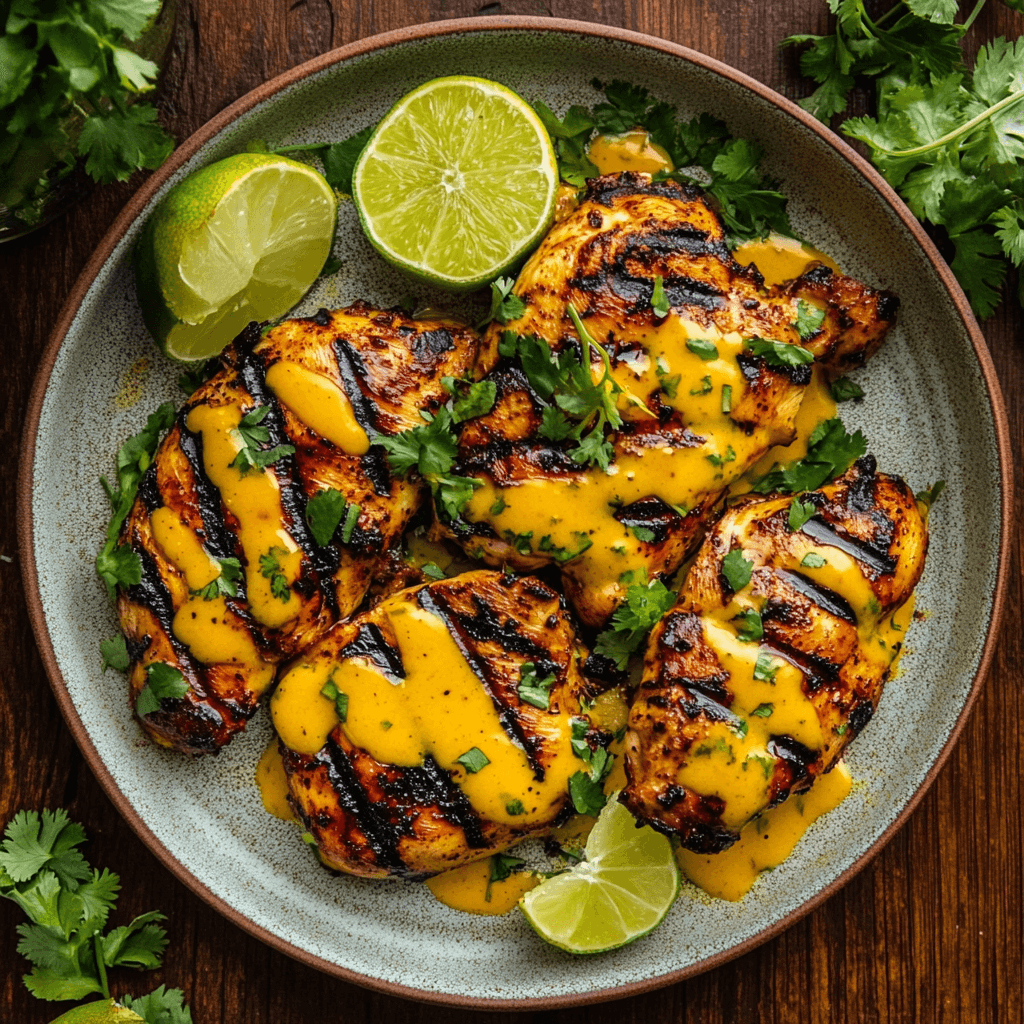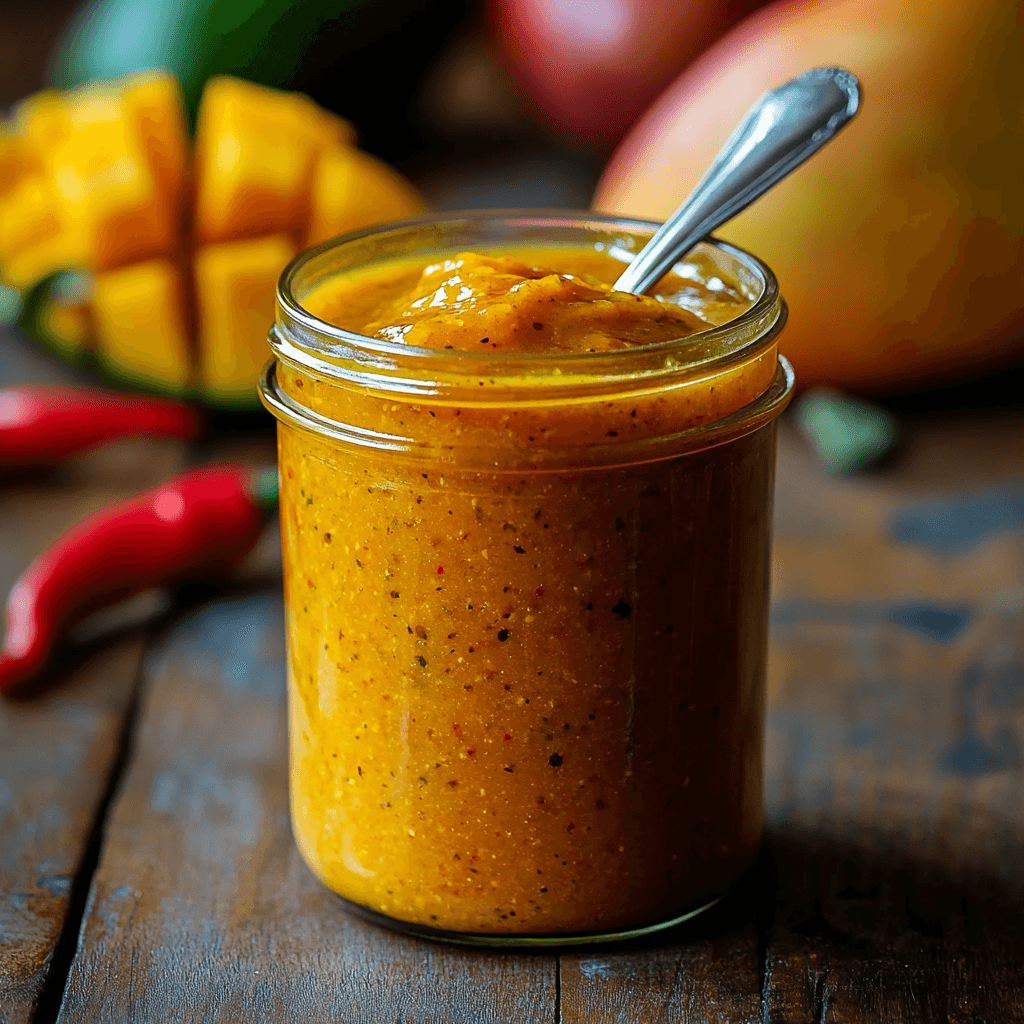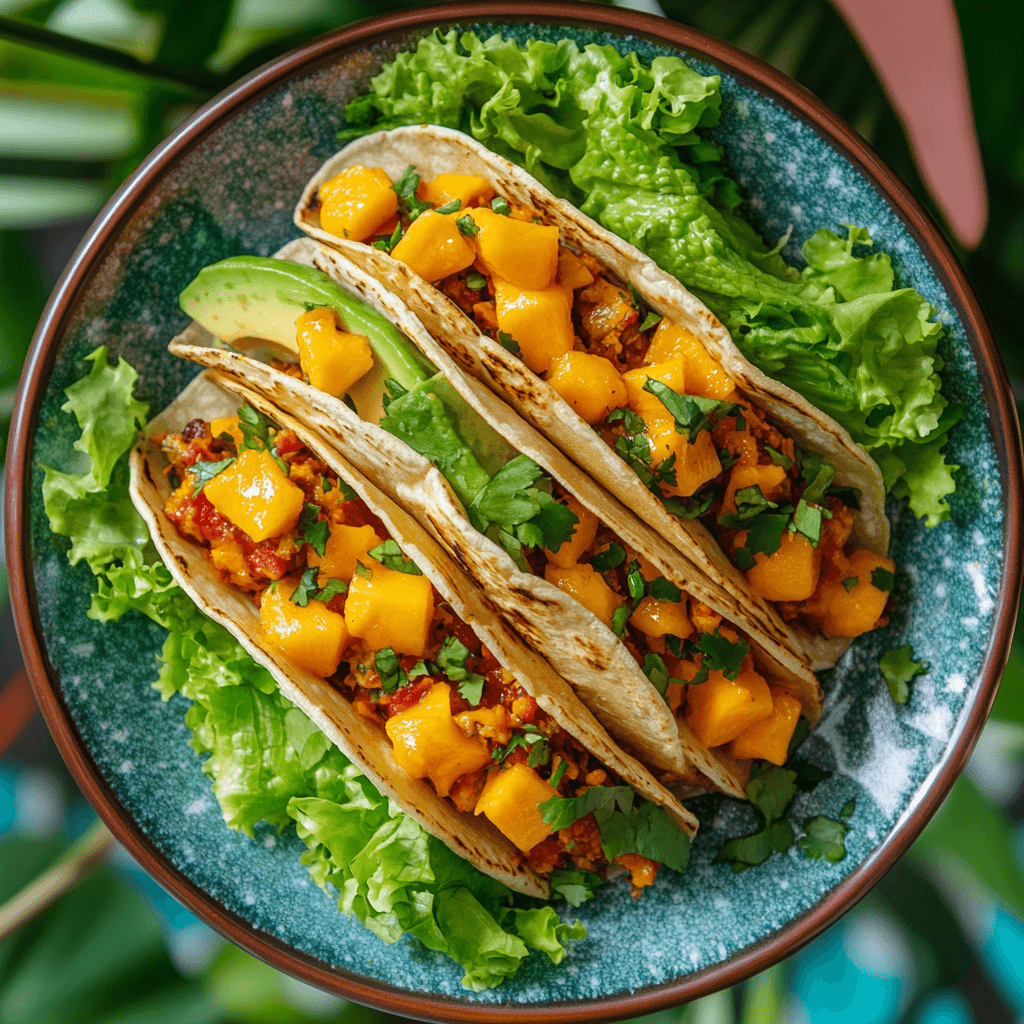Mango habanero sauce is a vibrant and exciting condiment that brings together the intoxicating sweetness of ripe mangoes and the fiery heat of habanero peppers. This culinary masterpiece enhances your dishes and adds a unique taste sensation to any meal. In this article, we will explore how to create mango habanero sauce, its ideal pairings, tips for adjusting the spice level, and delicious variations you may want to try. If you’re ready to embark on a flavor adventure, this guide is for you.
What is Mango Habanero Sauce Made Of?
Mango habanero sauce stands out because of its key components, each playing a crucial role in achieving that perfect balance of flavors. Here’s a deeper insight into the primary ingredients:
- Ripe Mangoes: These fruits are not just sweet; they bring a creamy texture that smooths out the heat from the habaneros. When selecting mangoes, look for ones that have a slight give when squeezed, indicating ripeness. The flavor of fresh, ripe mangoes takes this sauce to another level, creating a refreshing base.
Habanero Peppers: Known for their vibrant orange and red colors, habaneros provide a significant heat punch, ranging between 100,000 to 350,000 Scoville Heat Units. The warmth is not just hot; it has a fruity undertone that pairs superbly with the mango’s sweetness. If you’re cautious about spice, you can always start with fewer peppers or even consider coconut cream to balance the heat.
Vinegar: This ingredient is critical for adding acidity to the sauce. The tangy flavor helps cut through the sweetness of the mango, creating a well-rounded sauce. Apple cider vinegar or rice vinegar are excellent choices, adding varied flavors depending on your preference.
Sugar: While mangoes generally provide natural sweetness, additional sugar can help round out the flavors. Start small, and adjust it based on the ripeness of the mango. For a healthier option, consider using honey or agave syrup.
Spices: Incorporating spices like garlic powder, cumin, or salt enhances the complexity of the sauce. Garlic adds aromatic depth and an additional layer of flavor that is hard to resist.
The Ideal Proportions: A Simple Recipe
Creating your own mango habanero sauce can be a fun and rewarding process. Here’s a detailed recipe that allows you to customize it to your taste:
| Ingredient | Amount | Notes |
|---|---|---|
| Ripe Mango | 2 medium | Choose soft mangos for best flavor. |
| Habanero Peppers | 2-4 peppers | Adjust according to heat preference. |
| White Vinegar | ½ cup | For balancing sweetness. |
| Sugar | 2 tablespoons | Adjust to taste. |
| Garlic | 1 clove | Optional, enhances flavor. |
| Salt | 1 teaspoon | A pinch helps bring flavors together. |
Table of Contents
How to Make Your Own Mango Habanero Sauce
Making this sauce is straightforward. Here’s a step-by-step guide to get you started:
- Prepare the Ingredients: Start by peeling and roughly chopping the ripe mangoes. For the habanero peppers, slice them open, remove the stems and seeds, and chop them. If you’re sensitive to heat, wear gloves during this step to avoid irritation.
Blend the Ingredients: In a blender, combine the chopped mangoes, habanero peppers, vinegar, sugar, garlic (if using), and salt. Blend until you achieve a smooth consistency. Adjust the thickness based on your preference by adding a little water if necessary.
Tip: Start with the lower number of habanero peppers in your first batch until you get a feel for the heat level.
Taste and Adjust: Taste your sauce. If it needs more heat, consider adding more habaneros. For sweetness, additional sugar or honey might do the trick. Always remember to blend again after adjusting.
Store Properly: Transfer the sauce into a clean, airtight jar or container and refrigerate. The flavors continue to develop as it sits. It typically lasts about 1-2 weeks in the fridge. For longer storage, consider freezing small portions.
Serve and Enjoy: This sauce is versatile! Use it as a marinade, dip, or condiment for various dishes. Your taste buds will thank you!
Evaluating the Spice Level: Is Mango Habanero Very Spicy?
Understanding the spice level of mango habanero sauce is crucial for a satisfying culinary experience. Habanero peppers can truly light up a dish; hence, adjusting the level of heat is important, especially if you’re serving guests or family members who might have different heat tolerances.
Spice Level Breakdown
To assess whether this sauce is too spicy for your palette, consider the following:
- Taste It First: When preparing your sauce, consider boosting the heat gradually. By starting with fewer habaneros, you can taste-test your way to the right level. If you serve it to others, let them know that they can add more sauce to increase spice as desired.
Balancing Act: If the sauce turns out too spicy, consider balancing it with yogurt or sour cream as a dip. Additionally, you can dilute it by mixing in more mango or vinegar.
Know Your Habaneros: Not all habaneros are created equal. As mentioned earlier, some can pack more heat than others. When selecting your peppers, look for vibrant colors and firmness—fresh peppers tend to have a more intense flavor.
This level of understanding allows you to experiment confidently. For example, make a batch of sauce with one habanero, taste it, then decide if you can handle more in your next attempt.
What Does Mango Habanero Sauce Go With?
The delightful complexities of mango habanero sauce make it a true culinary gem. You can pair it with a variety of dishes, from grilled meats to veggie dips. Here’s a deeper look into how you can incorporate this sauce into your meals:
Grilled Meats
Grilled meats are a classic pairing with mango habanero sauce. The flames amplify the meat’s natural flavors, while the sauce adds a delightful sweet heat. Whether it’s chicken, pork, or beef, a few spoonfuls of this sauce brushed on while grilling can create a stunning glaze.
Tip: For a unique twist, marinate your proteins in the sauce before grilling. The meat will soak up those exquisite flavors. Moreover, pairing it with a side of fresh mango salsa can create a harmonious balance on your plate.
Seafood Delights
Seafood and tropical flavors dance beautifully together, making mango habanero sauce an excellent choice for fish dishes. For instance, grilled fish tacos topped with this sauce offer a fresh and zesty meal.
Example: Consider a preparation where you marinate shrimp in lime juice and a bit of mango habanero sauce before grilling. The bright flavors complement the shrimp magnificently, and adding sliced avocados can also provide a creamy contrast.
Appetizers and Dips
Mango habanero sauce doubles as a brilliant dip. Serve it alongside crispy tortilla chips or freshly cut vegetables at your next party. Additionally, blending it with cream cheese creates a delightful spread for crackers.
Here’s a practical way to elevate your appetizer game: create a vibrant mango habanero chicken wing dish. Toss cooked wings in the sauce, then serve with celery sticks and a cooling dipping sauce made from yogurt and herbs to counterbalance the heat.

Ingredients in Sweet Baby Ray’s Mango Habanero Sauce
If making your own sauce isn’t in the cards, don’t fret—commercial options exist. One popular choice is Sweet Baby Ray’s mango habanero sauce. Known for its sweet and tangy flavor profile, it strikes a balance that appeals to many.
In this sauce, you’ll generally find:
- Mango Puree: The forefront flavor, providing that quintessential sweetness and fruitiness.
- Distilled Vinegar: To add acidity that contrasts beautifully with the sweetness.
- Sugar: Sweetens the overall taste, making it universally appealing.
- Habanero Peppers: For heat—though the exact amount may vary.
- Corn Syrup: Sometimes included to enhance sweetness, creating that delightful sticky texture.
- Spices: Each brand varies slightly, but they typically add a complex flavor depth.
If you’re looking for quick convenience without compromising too much on flavor, this sauce might be a perfect choice.

Wrapping It Up: Looking Ahead
As we’ve explored, mango habanero sauce is more than just a dip; it’s a versatile ingredient that can reinvigorate a wide array of dishes. In the remaining sections of this article, we’ll dive into more variations of this delicious sauce, common mistakes to avoid during its preparation, and frequently asked questions regarding its usage. Continue reading to unlock even more tasty possibilities!
Mango Habanero Sauce: The Perfect Blend of Sweet and Heat
How to Make Your Own Mango Habanero Sauce (Step-by-Step Continued)
Now that we have laid the foundation for creating mango habanero sauce, let’s delve deeper into the process, ensuring that every step is clear and packed with tips for success. The fun truly begins once your ingredients are prepared, and we now focus on how to turn those vibrant components into a delightful sauce.
The Cooking Process and Enhancements
- 1. Simmer the Sauce: After you’ve blended the ingredients together, you can elevate the flavors through simmering. Pour your blended mixture into a saucepan over medium heat. Allow it to simmer gently for approximately 15-20 minutes. This step is vital as it allows the flavors to meld beautifully. The act of simmering not only thickens the sauce but also enhances the sweetness and mellows out the sharpness of the habanero.
- 2. Straining for Smoothness (Optional): For those who prefer a velvety texture, consider straining your sauce. This process involves passing the mixture through a fine mesh sieve to remove any bits of fruit or seeds. Straining results in a glossy sauce that is visually appealing and suitable for drizzling on dishes without any chunky texture. However, if you enjoy the texture, feel free to skip this step—it’s all about personal preference.
- 3. Taste and Adjust: Once your sauce has simmered, it’s time for a crucial taste test. This is your opportunity to achieve balance. If you feel it needs more acidity, consider adding a splash of vinegar. Conversely, if the sauce feels too acidic, a little extra sugar or honey can round it out. This step is essential as everyone’s palate is unique!
- 4. Cool and Store Properly: After achieving the desired flavor, remove the sauce from heat and allow it to cool completely before storing it. Transfer it to a clean, airtight container. If stored properly in a refrigerator, your homemade mango habanero sauce can last for about two weeks. For longer storage, consider freezing it in small portions. Using an ice cube tray for freezing can offer convenient single-serving sizes for future meals.
- 5. Utilization and Presentation: Now that your sauce is ready, the culinary possibilities are endless! You can use it in several ways: as a marinade, dressing, or dipping sauce. It pairs excellently with grilled meats, seafood, and even roasted vegetables. To serve, drizzle it over grilled chicken and garnish with fresh herbs for a burst of color and flavor.
Here’s a summarized checklist to follow:
| Step | Description |
| Simmering | Heat sauce gently to meld flavors |
| Straining | Optional, for a smoother texture. |
| Taste Test | Final adjustments for flavor balance. |
| Cool and Store | Refrigerate for up to 2 weeks or freeze. |
| Utilization | Use as a dressing, marinade, or dip. |
Pro Tips & Variations
Now that you’ve mastered the basic recipe for mango habanero sauce, let’s explore some exciting tips and variations to expand your culinary creativity:
- 1. Adjusting the Heat Level: If you find the heat of habanero peppers overwhelming, there are several strategies to manage it. Instead of using a full pepper, you might begin with just half. Alternatively, substitute habaneros with milder peppers like Jalapeños or Poblano. Another idea is to remove the seeds and white pith from habaneros, which contain much of the heat, allowing for a more balanced flavor.
- 2. Sweet and Spicy Twists: To broaden the flavor profile, consider adding other fruits such as pineapple or peaches to the blend. These additions not only maintain the sauce’s sweetness but introduce delightful tropical flavors that compliment the mango beautifully. For instance, a mix of mango and pineapple can yield a refreshingly sweet and tangy sauce perfect for summer barbecues.
- 3. Herb Infusions: Fresh herbs can enhance the flavor of the sauce significantly. Experiment with adding cilantro, basil, or even mint. Add these herbs at the end to maintain their fresh and vibrant flavors. This addition can create an exciting twist, particularly with cilantro, which works wonderfully in Mexican, Asian, and Indian cuisine.
- 4. Playing with Spices: Introduce spices like cumin, coriander, or even a dash of smoked paprika. These spices can add depth to the sauce. For instance, smoked paprika gives a subtle smokiness that harmonizes well with grilled meats, making every bite more flavorful.
- 5. Creative Presentation and Pairing Ideas: When serving dishes featuring mango habanero sauce, consider garnishing with fresh mango slices or chopped cilantro for a vibrant touch. Not only does this elevate the dish’s appearance, but it also adds freshness. Pair the sauce with grilled shrimp tacos topped with avocado for an exquisite treat. Alternatively, consider creating a platter of grilled vegetables served alongside the sauce for a healthful, colorful side.

While you may be tempted to enjoy your sauce right away, letting it sit for a day before using it can further develop its flavors. This extra time allows the ingredients to mingle and can enhance the overall taste.

Frequently Asked Questions (FAQs)
As we explore more about mango habanero sauce, let’s address some common questions surrounding this tasty condiment:
What is mango habanero sauce made of?
Mango habanero sauce is primarily made from ripe mangoes, habanero peppers, vinegar, sugar, and optional spices. The combination of these ingredients creates a sweet, spicy profile that enhances a variety of dishes. For those who prefer customization, feel free to adjust the quantities of each ingredient to suit your taste preferences.
Is mango habanero very spicy?
Yes, mango habanero sauce can be very spicy due to the habanero peppers, which can range significantly in heat. Typically, habaneros measure between 100,000 to 350,000 on the Scoville scale, making them one of the spicier options available. However, the sweetness of the mango helps balance the heat. If you are sensitive to spice, consider starting with fewer peppers.
What does mango habanero sauce go with?
This versatile sauce complements a wide selection of dishes. You can pair it with grilled chicken, shrimp, fish tacos, and even roasted vegetables. Additionally, it works beautifully as a dipping sauce for appetizers or a zesty addition to salads. Ultimately, you can experiment with any dish where you want to incorporate a sweet and spicy kick!
What are the ingredients in Sweet Baby Ray’s mango habanero sauce?
Sweet Baby Ray’s mango habanero sauce generally consists of mango puree, distilled vinegar, corn syrup, sugar, habanero peppers, and various spices. This commercially produced sauce is convenient for those who want a quick and tasty option without the effort of making it from scratch.
How can I adjust the heat in my mango habanero sauce?
You can adjust the heat of your sauce by experimenting with the number of habanero peppers used. Start with one habanero and gradually build up the heat according to your preferences. Additionally, you might want to include more mango to balance the sauce or add creamy elements like yogurt or sour cream for a cooling effect.
Can I use other types of fruit in my recipe?
Absolutely! Besides mango, you can consider utilizing other fruits like pineapple, peaches, or even kiwi. Each additional fruit can add distinct flavors while maintaining the sweet and spicy essence of the sauce. When blending, opt for fruits that pair well together while providing a complementary flavor profile.
How long can I store mango habanero sauce?
When stored in an airtight container in the refrigerator, mango habanero sauce typically lasts for about two weeks. For longer storage, you can freeze the sauce in small portions. Using ice cube trays is an effective method, allowing you to thaw just what you need for future recipes.
Conclusion
In summary, mango habanero sauce is a delicious and versatile addition to your culinary repertoire. By following the steps outlined in this article, you can create a sauce that elevates any dish while allowing you to customize it to your taste. With its blend of sweet mangoes and fiery habaneros, this sauce offers a delightful flavor profile that’s perfect for grilling, dipping, or enhancing a variety of meals. Whether you’re a seasoned cook or just starting your culinary journey, this sauce is sure to impress and delight. Enjoy experimenting with variations, and don’t forget to savor every delicious drop!


